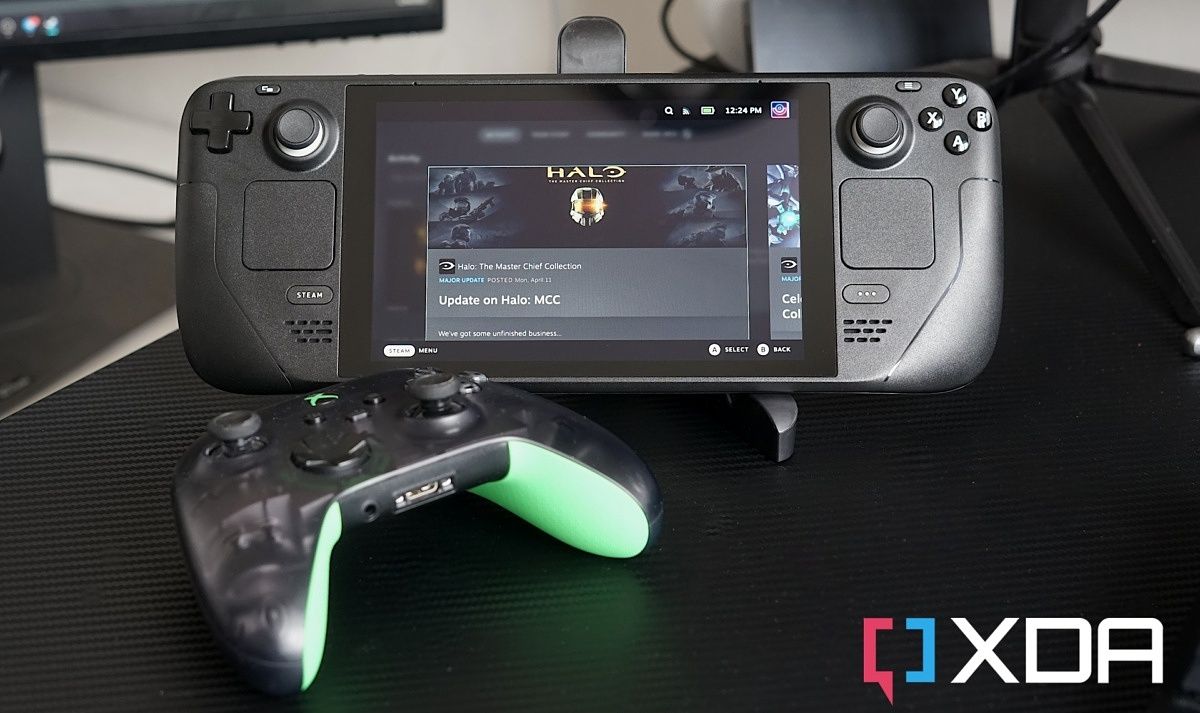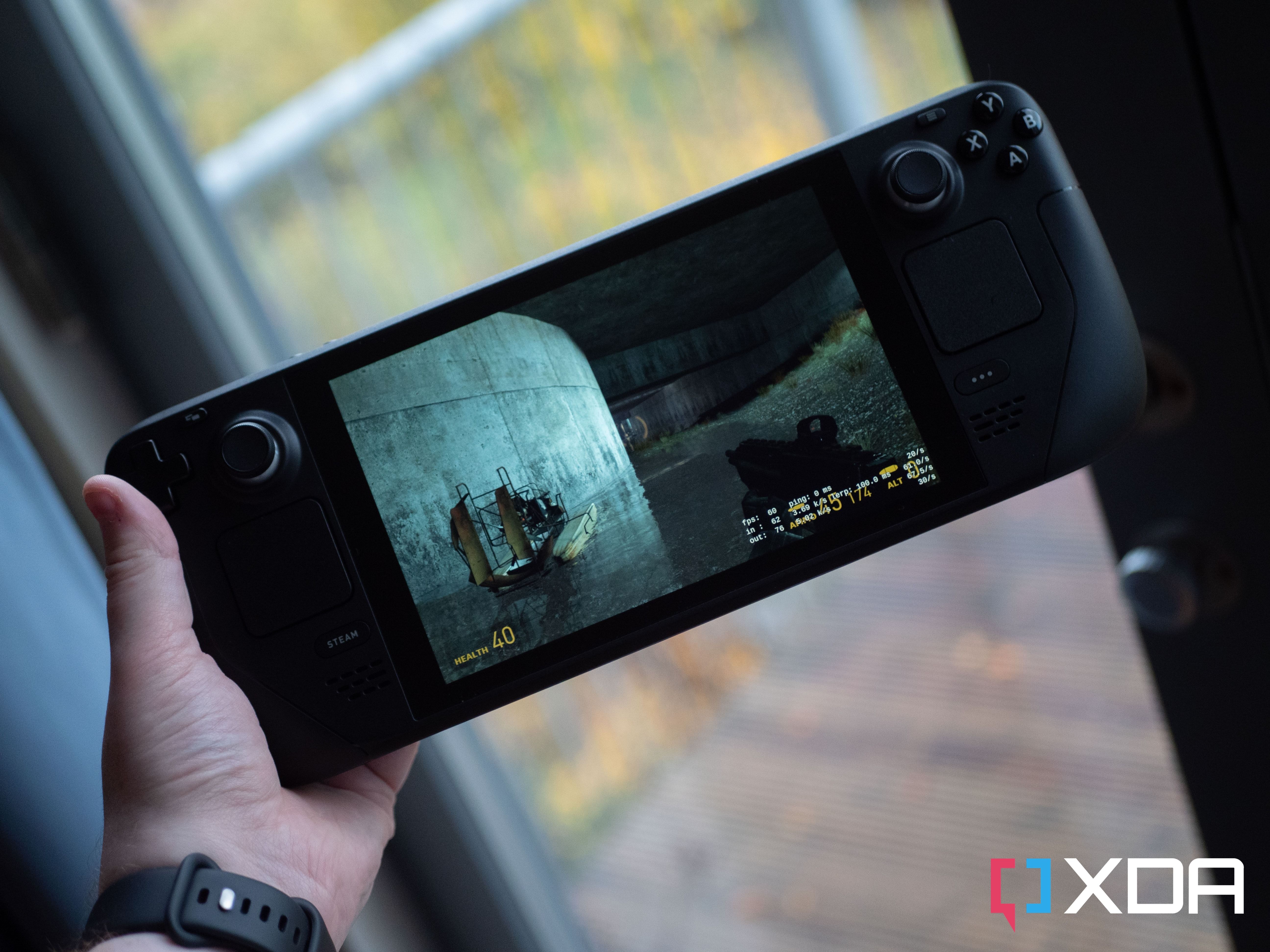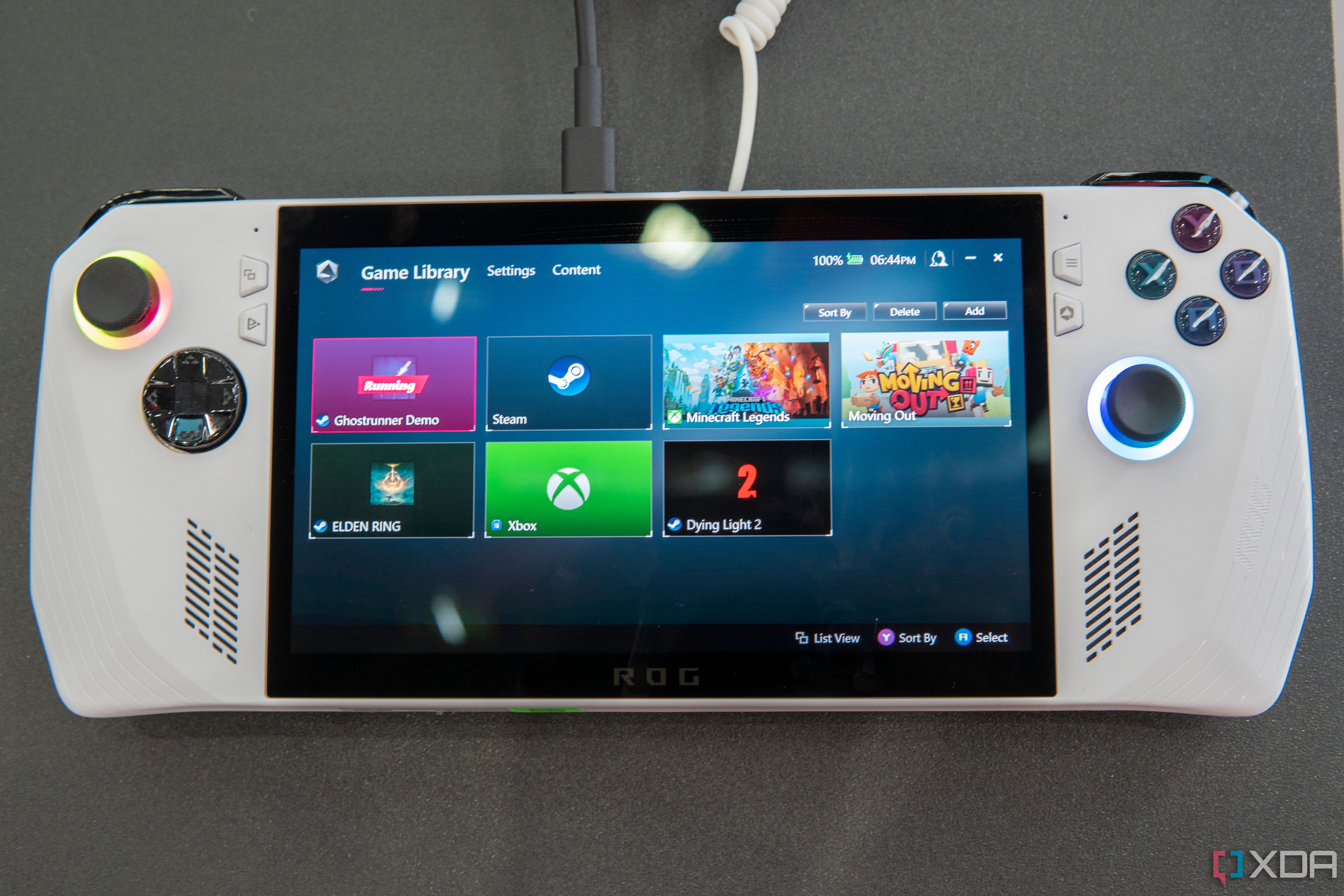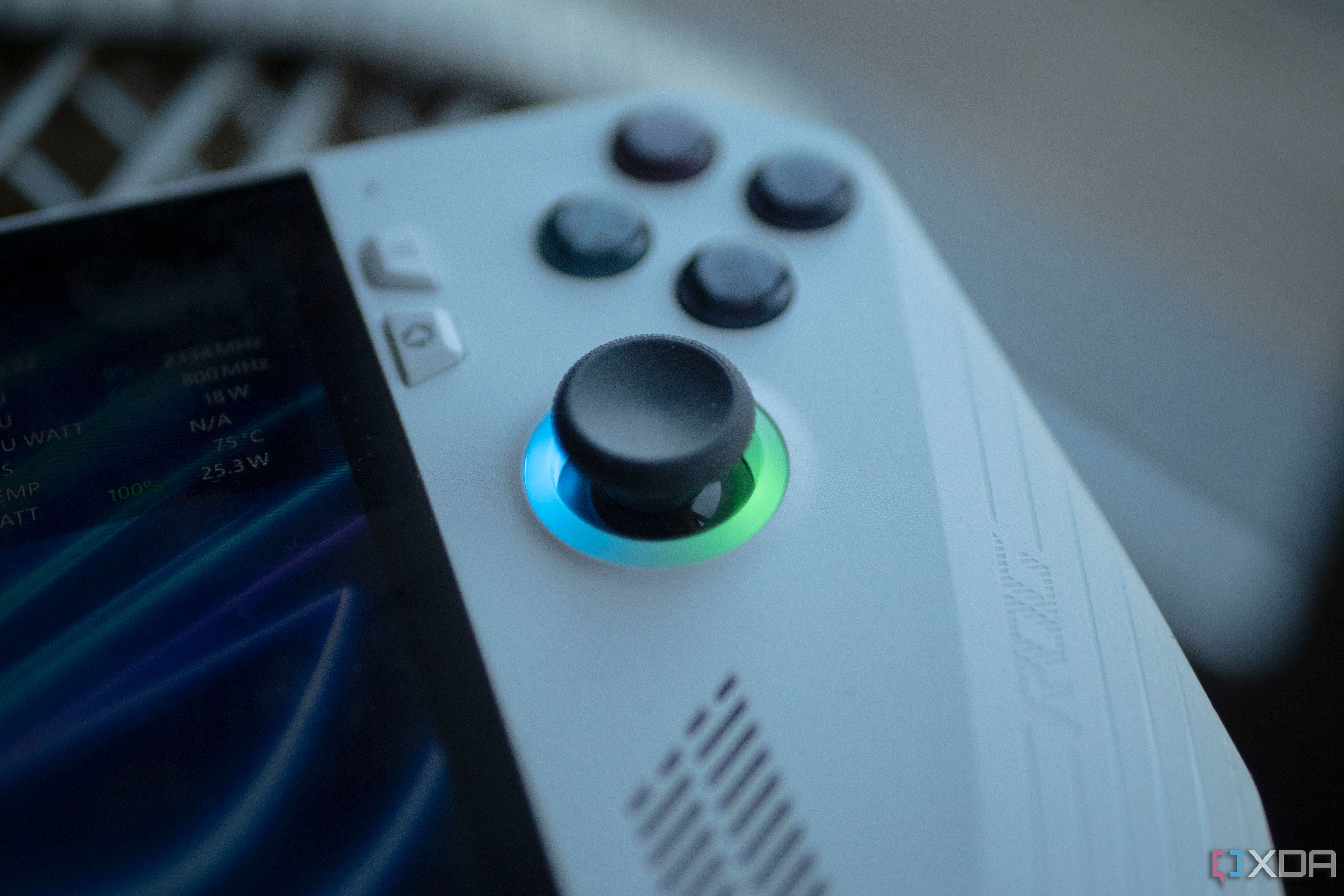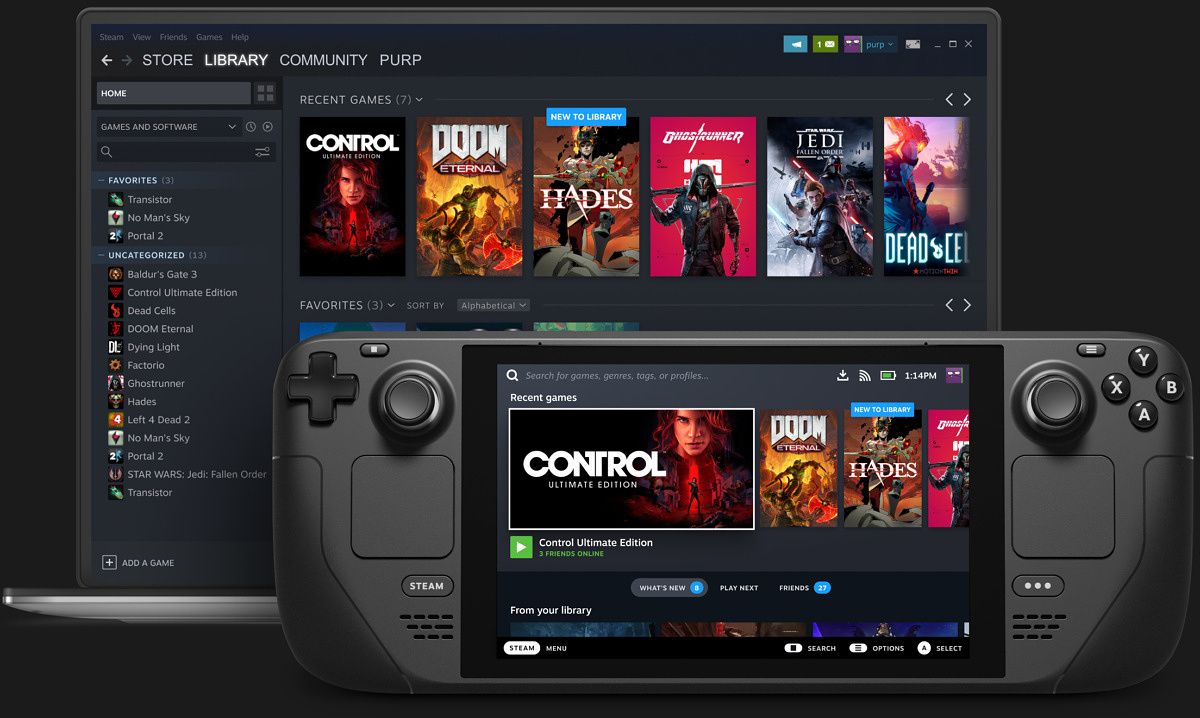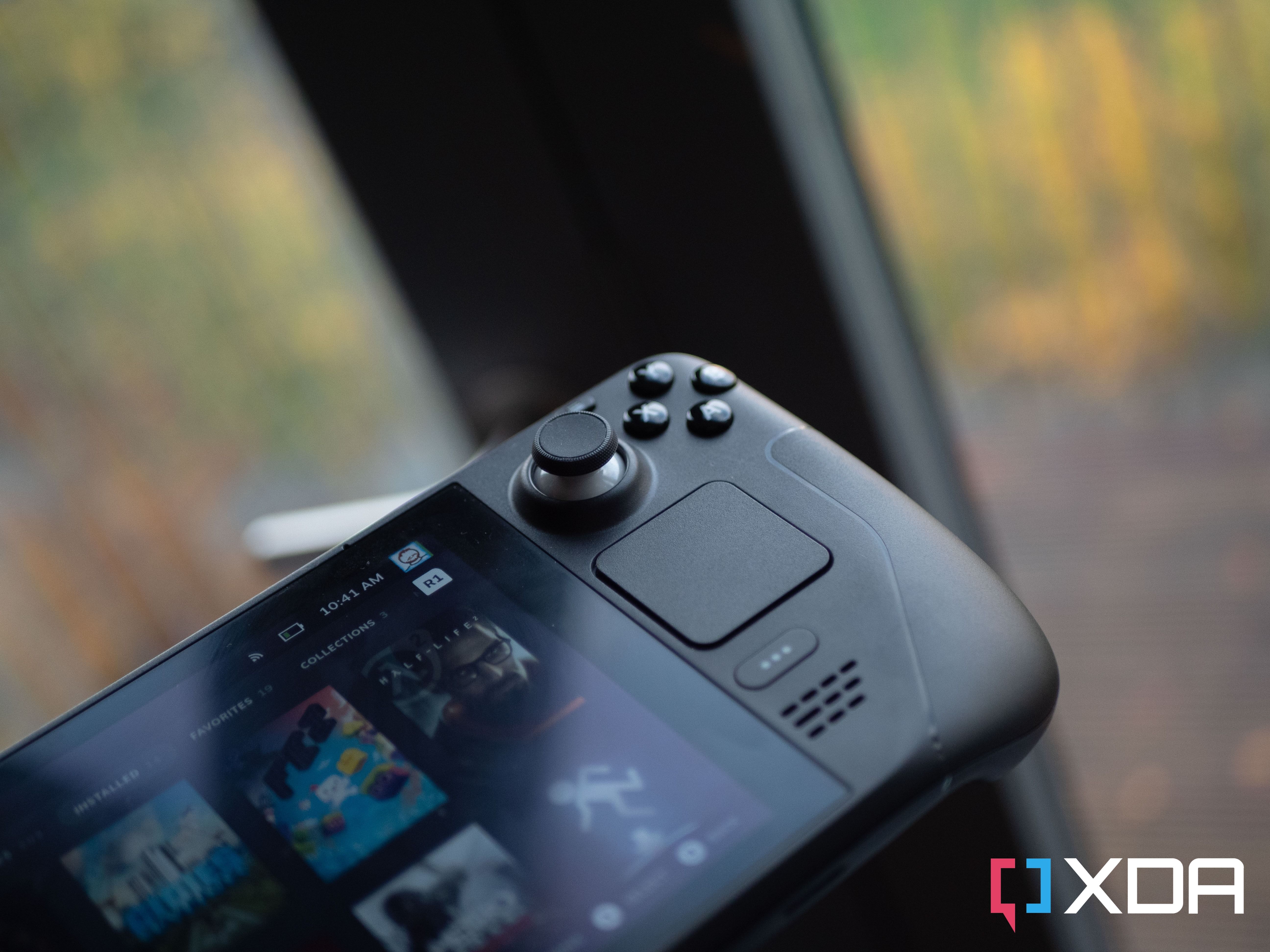Asus's ROG Ally is arriving next month and it's the first serious challenger to Valve's Steam Deck, which was released just over a year ago. Although most agree that each device has its pros and cons, there are some hot takes out there that I've got to talk about. These range from arguments that the Ally has effectively replaced the Deck to trying to convince people not to cancel preorders over negative reviews, to downplaying the high price of the Ally, to claims that low battery life is not only okay in a handheld PC but just the way things will be. Nobody needs to be defending Asus this much.
Most can agree that both devices have their place, but I don't think that the Ally is necessarily the next generation in handheld gaming PCs while the Deck is a last-generation alternative. Incidentally, it is a great option for those who can't afford the Ally, but that's because it's a great device overall, and has a far more balanced set of characteristics than the Ally. For those who need the best performance more than anything else, the Ally is a viable product, but the Deck isn't going anywhere thanks to some important features.
The Steam Deck's low price makes it far more accessible
It might seem obvious, but think a lot of people tend to underestimate how important price is when it comes to devices. The cheapest model of the Steam Deck is $400, while the ROG Ally starts at $600, and that's not a small difference. There are going to be many gamers out there who simply can't or would struggle to afford even the cheapest model of the Ally, which alone gives the Deck a great reason to continue existing.
Now, the base model of the Deck won't be the best. It only comes with 64GB of eMMC memory, and that's very much lacking in both capacity and performance. That being said, you can do what I did and upgrade the Deck's internal storage and there are SSDs made for the Deck, such as Sabrent's Rocket 2230 PCIe 4.0 drive, which is about $100 for 1TB, or $500 total for a 1TB Deck (and this is just one of the many upgrades/accessories for the Deck). As for performance, it's true that the roughly 50% extra performance on the Z1 Extreme-equipped Ally is significantly more, but not worlds apart.
It's also important to consider what you're getting with the ROG Ally for $200 extra. There are some useful features like the faster integrated GPU (though we haven't tested it yet to know just how much faster it is than the one in the Deck), FreeSync on the display, and a lighter weight. On the other hand, it has some unnecessary additions, like having six cores, a 1080p display, and a PCIe 4.0 SSD. Additionally, there are some critical things the Deck has that the Ally lacks, and two, in particular, are even more important than its price.
The ROG Ally's controller just isn't as good as the Deck's
One of the greatest things about the Deck is the plethora of buttons you have at your disposal. There are the typical face buttons, D-pad, bumpers, triggers, and joysticks, but there are also four customizable grip buttons on the back and Steam's signature haptic touchpads. By contrast, the Ally has just two grip buttons and no touchpads whatsoever, which can pose a significant problem in games that are better played with a mouse rather than a joystick.
However, the Ally's hardware isn't enough to sink the controls. The Steam Deck makes additional huge differences with its software. If you've never played on the Deck or in Steam Big Picture Mode, you might not know how robust Steam's controller support is. Not only does Steam recognize controllers from other companies like Nintendo's Switch Pro Controller, but it also provides an extremely comprehensive and complex system for customizing button inputs. I found the Verge's Ally review quite thorough in explaining what the Ally can't do and what the Deck can. It lacks gyro aiming (even though the Ally has a gyro), joystick sensitivity adjustment, combination presses, and other capabilities.
But perhaps the Deck's greatest strength is that everyone can make their own customized button layouts and share them through Steam. I can't tell you how many times I have been so grateful for this feature, whether I'm playing on my Steam Deck or my custom Steam Machine. It's really nice to take someone else's controller configuration and modify it to my particular needs, and I couldn't imagine not having that on a handheld gaming PC, though this is a problem Asus could solve in a future update.
Windows 11 can't beat SteamOS in handheld PC gaming
This one is harder for Asus to solve because it's not really in Asus's hands. Simply put, Windows 11 can't match SteamOS when it comes to handheld gaming. Windows 11 is a great operating system, arguably the best, but devices like the Ally and the Deck are handheld first and gaming PCs second. SteamOS is just doing a lot of stuff that Windows 11 can't, at least not right now.
By making its own operating system based on Linux, Valve was able to offer a totally gaming-focused experience on the Deck. The UI is almost seamless, with only a handful of moments that remind you that you're playing on a PC and not a console like the Switch.
By making its own operating system based on Linux, Valve was able to offer a totally gaming-focused experience on the Deck.
By contrast, the Ally is basically just a Windows 11 PC with Armory Crate trying to wrangle all your games into one application and attempting to provide all the on-the-fly functions SteamOS offers, but not as well. Windows just doesn't offer the same in-depth customization that Linux does, so Armory Crate can only exist on top of Windows and do its best.
The biggest selling point of Windows on a handheld gaming PC is native support for virtually every game since most games don't have a native Linux port. Of course, Steam has its Proton compatibility API, which negates the need for native Linux ports and makes many games available on Windows playable on Linux. Proton isn't perfect, but I've been able to play lots of fairly niche games without significant problems, and games that do have issues today might not have them tomorrow. By using Windows, I think the Ally has sacrificed more than it has gained.
The Steam Deck is modest but it's still the best handheld gaming PC
Valve was clearly right when it invested so much into getting the price of the Steam Deck as low as possible, offering a controller with seemingly infinite customization and a proprietary OS made specifically for handheld gaming. Asus's ROG Ally is a clear reminder that performance isn't everything and that the best handheld gaming experience can't be delivered with brute force. As a piece of hardware, the Ally is by no means bad, but it's not the next step in handheld PC gaming. Rather, it's a faster alternative that exists alongside the Deck, much like the Ayaneo 2 and other devices.
Still, everyone would love to see a faster Steam Deck, myself included, but there are lots of reasons why Valve hasn't done this, including price (because better hardware is almost always more expensive to produce), along with power efficiency and battery life (another, albeit less significant, issue for the Ally).
That being said, Valve doesn't need to update the Steam Deck with a faster processor today, and won't need to for perhaps a couple of years. When it comes to what really matters in a handheld gaming PC, Valve is years ahead of everyone else.

